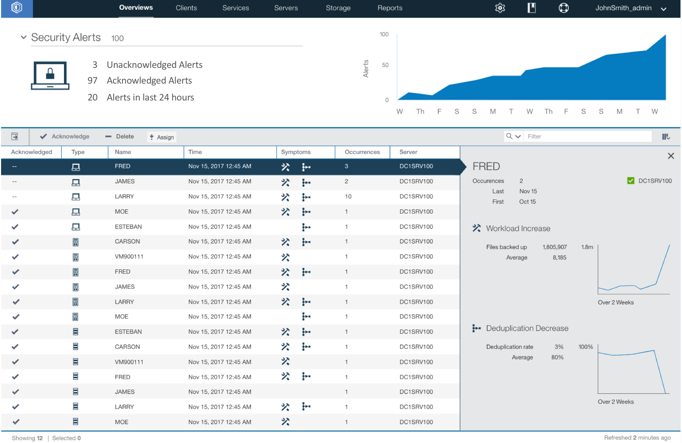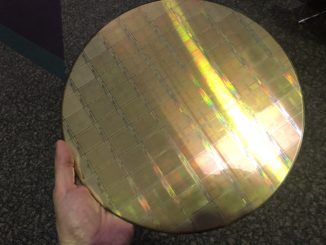
IBM’s systems hardware business finished 2017 in a stronger position than it has seen in years, due in large part to the continued growth of the company’s stalwart System z mainframes and Power platform. As we at The Next Platform noted, the last three months of last year were also the first full quarter of shipments of IBM’s new System z14 mainframes, while the first nodes of the “Summit” supercomputer at Oak Ridge National Laboratory and the “Sierra” system at Lawrence Livermore National Laboratory began to ship.
Not to be overlooked was the strong performance of the IBM’s storage unit, which saw revenue jump 8 percent in the fourth quarter 2017, representing the fourth consecutive quarter of increases. While announcing the quarterly results last month, Martin Schroeter, IBMs’ senior vice president of global markets, noted double-digit growth in high end products like all-flash arrays and capacity that is tied to the mainframes. He also pointed to demand for software-defined storage (SDS) and object storage as more data storage is happening in the cloud. The cloud also drove revenues in IBM’s storage software, which is part of the company’s Cognitive Solutions business.
The increasing demand for IBM’s storage products is being fueled by the same industry factors that are driving the hardware roadmaps of other tech vendors – the rapid increase in the amount of data that is being generated, artificial intelligence (AI) and machine learning capabilities that are enabling that data to be more quickly collected, processed and analyzed, and the migration of business data and applications to multiple public and private clouds. Enterprises are demanding tools that will let them more quickly gain access and insights into the data they are creating and drive business decisions based on those insights, and want more flexible, agile and responsive datacenter infrastructures that enable this. Jack Kavanaugh, senior vice president and CFO at IBM, said during the earnings call that IBM has worked hard to reposition its storage portfolio to address demands for SDS, flash and object storage, as well as support for emerging technologies like NVM-Express-over-Fabric.
IBM is looking to continue the momentum of its storage business with the unveiling this week of a broad array of innovations that touch on everything from SDS and flash storage to object storage, data protection and promised support for NVM-Express, which will help the vendor address the rapid changes that are roiling the industry.
“Driven by the exponential volumes of data growth and the underlying value in this huge treasure trove of information, many 21st century enterprises are moving quickly to modernize their traditional IT infrastructures while taking advantage of multi-cloud architectures and AI applications,” said Eric Herzog, vice president of product marketing and management for IBM Storage Systems, adding that the new capabilities are key parts of the company’s larger efforts around workloads aimed at the growing multi-cloud, AI and cognitive computing spaces.
More than half of the announcements come from IBM’s Spectrum SDS unit that includes infrastructure software and data protection. That includes the introduction of Spectrum NAS, as seen in the slide below, for SDS file storage that is aimed at scale-out environments and can run on x86 systems, bare metal and virtual machines. In addition, Spectrum Connect enables greater orchestration between IBM storage systems and the cloud and supports for more than 440 different virtualized storage systems from IBM and other vendors, giving a single management tool for storage environments that are becoming more heterogeneous and that leverage technologies like containers, VMware and Microsoft PowerShell.
Spectrum Virtualize 8.1.2 comes with new data reduction pools that provide up to three times the throughput for compressed volumes than previous versions and support for compression used for up to 10,000 volumes in a system. The software is used for IBM’s Storwize products, SAN Volume Controller and FlashSystem V9000 all-flash system as well as more than 440 storage systems from other vendors. IBM also is enhancing the Spectrum Protect Plus backup software for virtual environments with more database support, faster restores and automated data protection and provisioning or VMware in the IBM Cloud. Spectrum Protect, seen below, can automatically detect ransomware and send out alerts and can be used by enterprises to address requirements in the European Union’s upcoming General Data Protection Regulation (GDPR), which goes into effect in May.
For object storage, IBM is driving down the cost of storage nodes by using 12TB disks and enhancing the capabilities of unstructured data in regulated industries with encryption to comply with FIPS PUB 140-2 federal security standard, while businesses can now more easily migrate from IBM’s XIV Gen3 systems to the company’s FlashSystem A9000 and A9000R all-flash storage systems, while the FlashSystem 900 offers support for InfiniBand NVM-Express-over-Fabric. As we have noted, NVM-Express is an emerging protocol that aims to bring faster speeds and lower latency to flash and other non-volatile memory. IBM and other established vendors, including Dell EMC, NetApp and Intel are looking to put themselves into good positions for when the market expands. NVM-Express also is attracting smaller companies, including Pure Storage, Excelero, and E8 Storage.
IBM announced its NVM-Express strategy a year ago, and in December put on a demonstration that integrated Power9 systems and FlashSystem 900 arrays using NVM-Express over InfiniBand. Now the company this month is announcing support for NVM-Express-over-Fabric not only in the FlashSystem 900 but also Spectrum Accelerate and Spectrum Virtualize products in coming releases, according to Elisa Ortiz, storage portfolio marketing manager at IBM.
Ortiz said that “real-time analytics will provide enterprises with unprecedented capabilities to spot new market opportunities and drive deeper understanding of how to take advantage of them. NVMe helps technologies used in real-time analytics such as Apache Spark, SAP HANA, and NoSQL data stores more fully exploit the microsecond latency provided by all-flash arrays. It reduces I/O overhead between CPUs and storage, resulting in performance improvements compared to previous interfaces such as SCSI that were originally developed for use with far slower hard disk drives.”







Be the first to comment